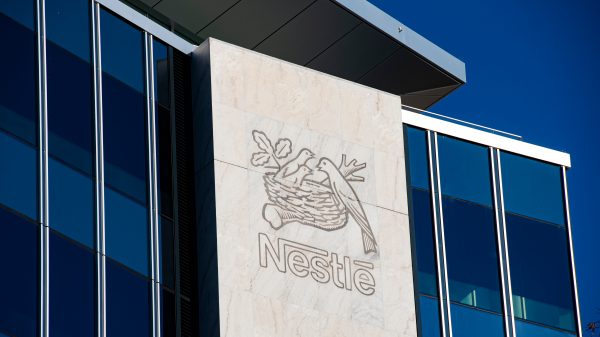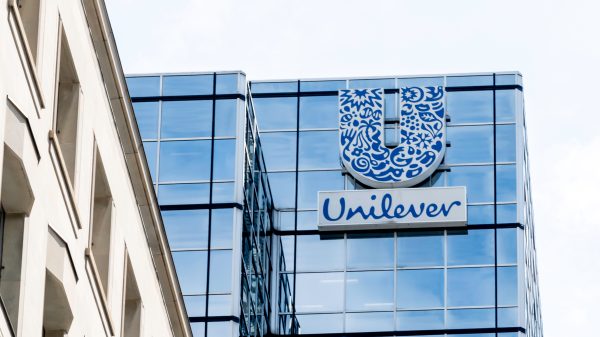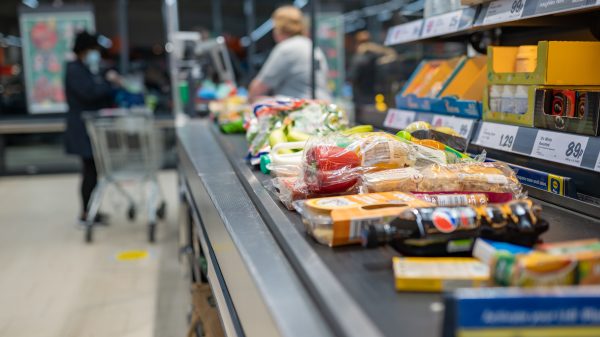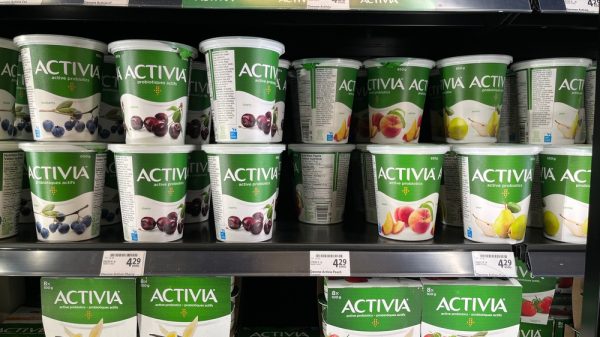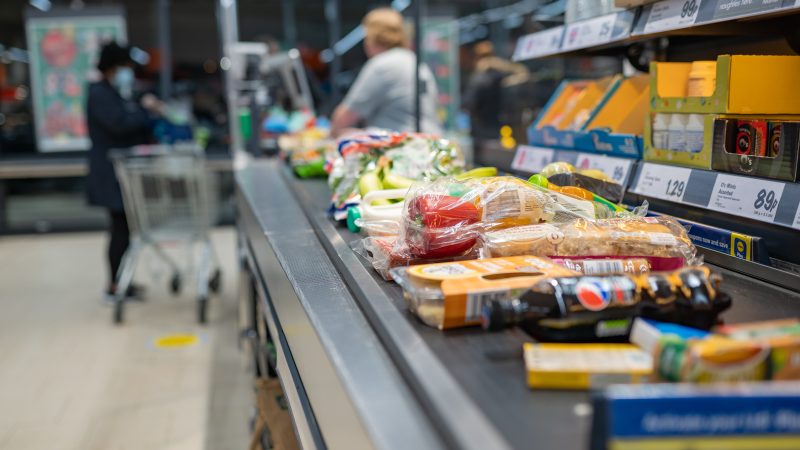The rapid rise in food inflation and the ongoing cost-of-living crisis is something all of us have been following closely for the last few months as it threatens to affect hundreds of thousands of families and households across the UK.
Grocery Gazette has been tracking the developments closely, making the most of metrics from the British Retail Consortium (BRC) and the Office of National Statistics (ONS), among others. In October, we reported that food inflation had hit its highest point since November 2020, while December saw food and drink inflation reaching its highest point in over three years.
Earlier this month, the ONS reported that the consumer price index (CPI) measure for inflation rose to 5.4% in December, the highest level for nearly three decades. Additionally, its household survey found that for those who saw their cost of living rise, 87% of people reported increasing food shop prices.
News outlets from the BBC to Sky News reported this figure, claiming “soaring food costs” with some predicting prices to rise as we move into spring.
READ MORE: Own-labels predicted to rise as inflation strikes food prices
Iceland managing director Richard Walker said: “We’re starting to lose some customers to food banks”.
“When you have real wages falling, Universal Credit top-up withdrawal, food inflation, tax rises, that obviously will hit hard.”
Despite the pleas from businesses, food banks and charities, it was Jack Monroe’s thread that statistically broke down just how severe the inflation has been for people and families on or below the poverty line.
Monroe, a journalist and anti-poverty campaigner, took to Twitter and slaughtered the ONS statistic for misreporting and showcased how this number – 5% – only shows a fragment of the story of inflation and “grossly underestimates the true cost-of-living crises.”
They posted a thread documenting the price increases of some of the basic products at their local Big 4 grocer.
“This time last year, the cheapest pasta in my local supermarket (one of the Big Four), was 29p for 500g. Today it’s 70p. That’s a 141% price increase as it hits the poorest and most vulnerable households.”
“This time last year, the cheapest rice at the same supermarket was 45p for a kilogram bag. Today it’s £1 for 500g. That’s a 344% price increase as it hits the poorest and most vulnerable households.”
This time last year, the cheapest rice at the same supermarket was 45p for a kilogram bag. Today it’s £1 for 500g. That’s a 344% price increase as it hits the poorest and most vulnerable households.
— Jack Monroe (@BootstrapCook) January 19, 2022
“Canned spaghetti. Was 13p, now 35p. A price increase of 169%.”
The Twitter conversation – which went on for days and was seen by millions – highlighted the struggles of the 2.5 million people who were forced by various circumstances to use food banks in the last year.
Neighbourly is a community organisation that connects with businesses offering surplus food and products to charities and people in need. Chief executive, Steve Butterworth, told Grocery Gazette in no uncertain terms what inflation increases really mean for people who are already using food banks and struggling financially.
“Neighbourly’s community surveys highlight a 156% rise in demand for local causes since early 2020,” he explained. “What inflation rises mean for many millions of people is skipped meals and no heating.”
Reflecting back to their own well-documented financial difficulties, Monroe told The Guardian, “People with very little are often the sharpest of economists and mathematicians,” referring to the ability to calculate the exact items to remove when the basket total exceeded “the pittance in our bank account”.
At the time of writing, Monroe’s thread has over 22 million views on Twitter and they have appeared on several TV and radio networks including the BBC and ITV.
READ MORE: GCA warns of unfair retail practices amid inflation
Moreover, the grass-roots campaign has garnered the attention of those that matter the most, with the ONS head of inflation statistics Mike Hardie admitting: “The headline CPIH measure captures the average but everyone has their own personal inflation rate.”
“Over the longer term, we are transforming the way we measure prices in order to understand people’s spending patterns in a more detailed and timely way.”
“We are currently developing radical new plans to increase the number of price points dramatically each month from 180,000 to hundreds of millions, using prices sent to us directly from supermarket checkouts.”
The cause is being recognised by the supermarkets as well, as they look to ensure they are not alienating consumers. “We recognise customers are facing an increased cost of living and we want to help manage the impact of this,” stated Sainsbury’s chief executive Simon Rodgers. “We’re investing in value more than ever and we’re not reducing our own brand value range.”
So how was this misconstrued “5.4%” figure calculated in the first place?
Tim Harford, a world-renowned economist and host of the BBC podcast: More or Less, interviewed the Institute of Fiscal Studies associate director Peter Levell to get insight into how the CPI inflation rates are calculated.
Levell explained: “The ONS starts by choosing a list of 700 items that it thinks is going to be representative of a typical household spending on different categories. Every year they update that according to trends and spending and technology.
“Once it has chosen those items, it then sends out price collectors to collect its prices in different regions, different shops and it will collect almost 200,000 price quotes over the course of the year.”
This is where the first problem might arise, The CPI includes products of the average consumer which for most products would be around the mid-market range, not the cheaper basic items. It’s very well possible that the items Monroe included in their thread were not part of the CPI calculation at all.
READ MORE: 85% of customers expect food prices to rise next year
Levell continued: “Because of the way the CPI is constructed, they take the price increases for a set of representative items, and they weigh those price increases according to share of household spending in the overall economy going to those things.”
“As well as only capturing the spend of the average consumer, it’s actually weighted towards richer households because they spend more, they’re going to have a disproportionate influence on the weights used to construct the CPI.”
The CPI is supposed to track inflation across the entire economy. Placing more weight on things people spend more money on simply means the CPI is unlikely to reflect the experiences of the poorer households.
Fareshare chief executive Lindsey Boswell concurred with this conclusion. She told Grocery Gazette: “The charities and community groups that we serve, and the latest price inflation research suggest that recent price rises and the increase in the cost of living are having a disproportionately significant impact on those already struggling to make ends meet.”
As of 21 January, Monroe has announced the launch of their own price index – the Vimes Boots Index – alongside a team of economists, charitable partners, retail price analysts, ex-staff from the ONS and other volunteers – one that will accurately document the price increases of basic essential supermarket items.
The Vimes Boots Index is named in honour of Sir Terry Pratchett’s “Sam Vines Boots Theory of socioeconomic unfairness”. It has received authorisation from Terry Prachett’s estate and his daughter, writer Rhianna Pratchett, has publicly backed Monroe on social media.
It's official! #VimesBootsIndex. With a little added Pratchettian anger from me. @BootstrapCook @terryandrob. ❤️https://t.co/PQxuSWAMFb
— Rhianna Pratchett 💙 🏳️🌈🏳️⚧️ (@rhipratchett) January 26, 2022
Monroe tweeted: “I’m hoping to update it monthly across a range of supermarkets as a fairer reflection on how inflation impacts those at the sharp end of the scale.”
Alongside their own ideas which stem from ten years of budget shopping, they reached out to their followers to ask what specific items should be included in calculating the new index.
The new price index is set to be welcomed by many charities and other social enterprises, providing insight and clarity on the severity of food inflation and its impacts on millions of people across the nation.
Click here to sign up to Grocery Gazette’s free daily email newsletter


